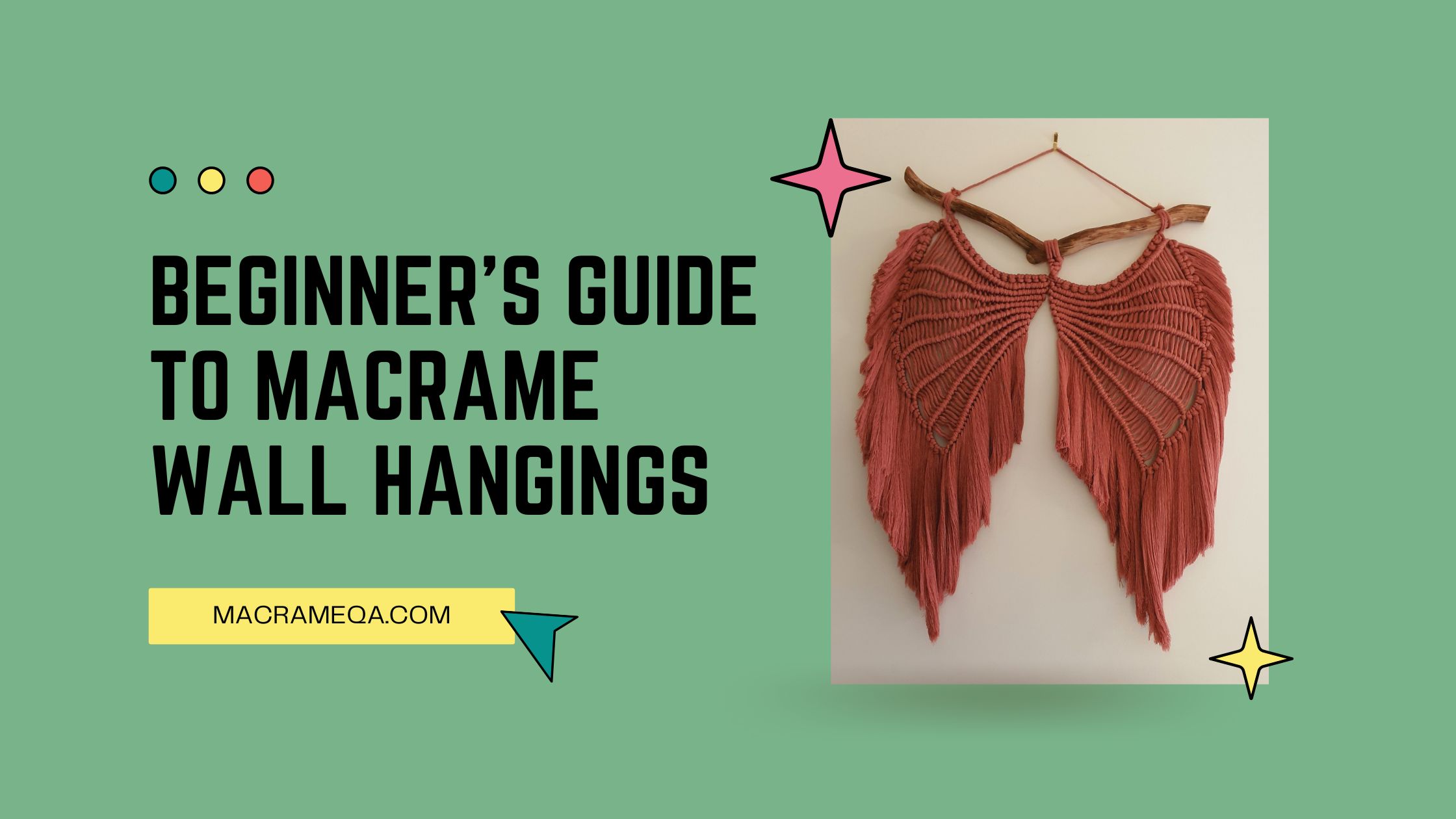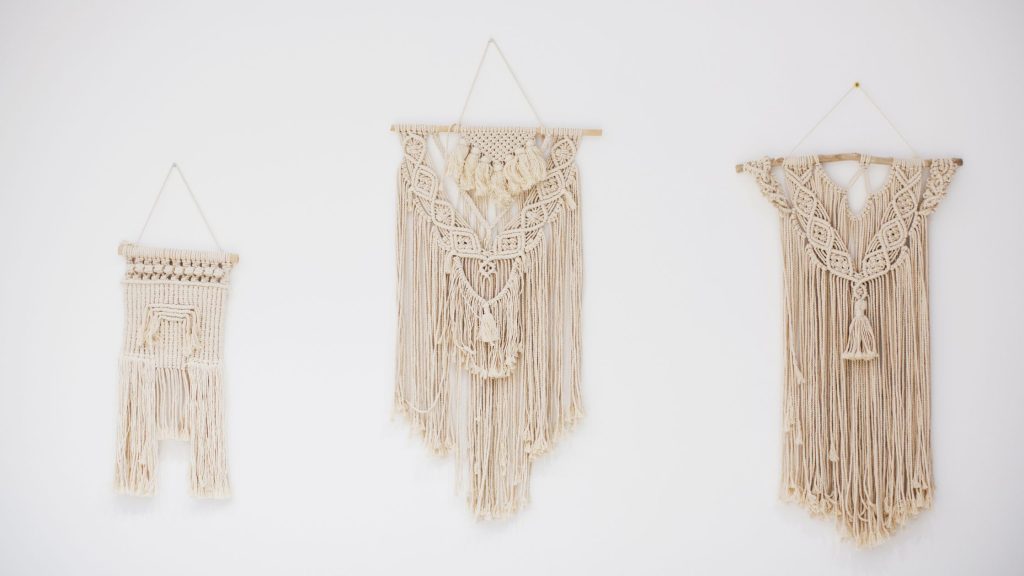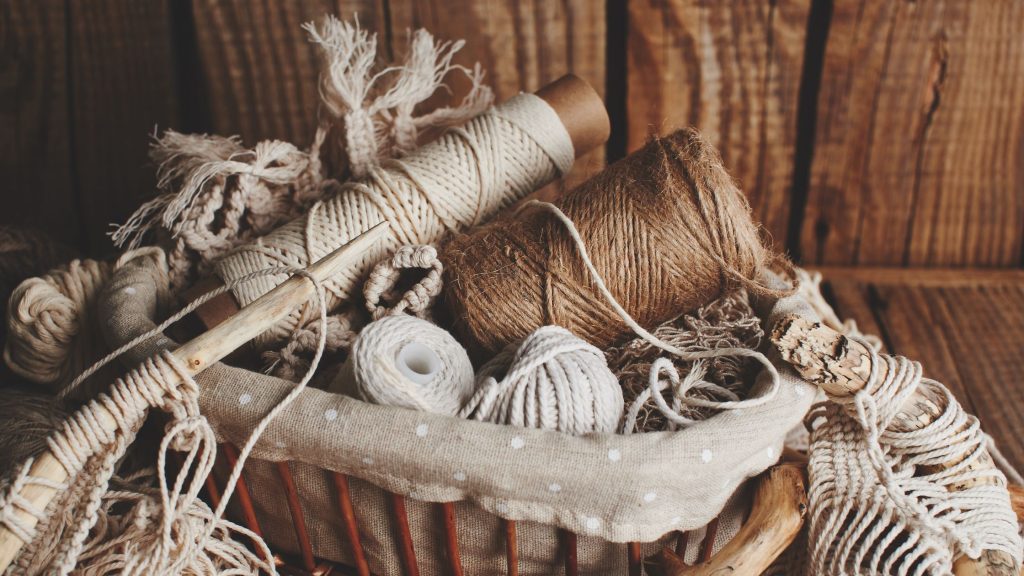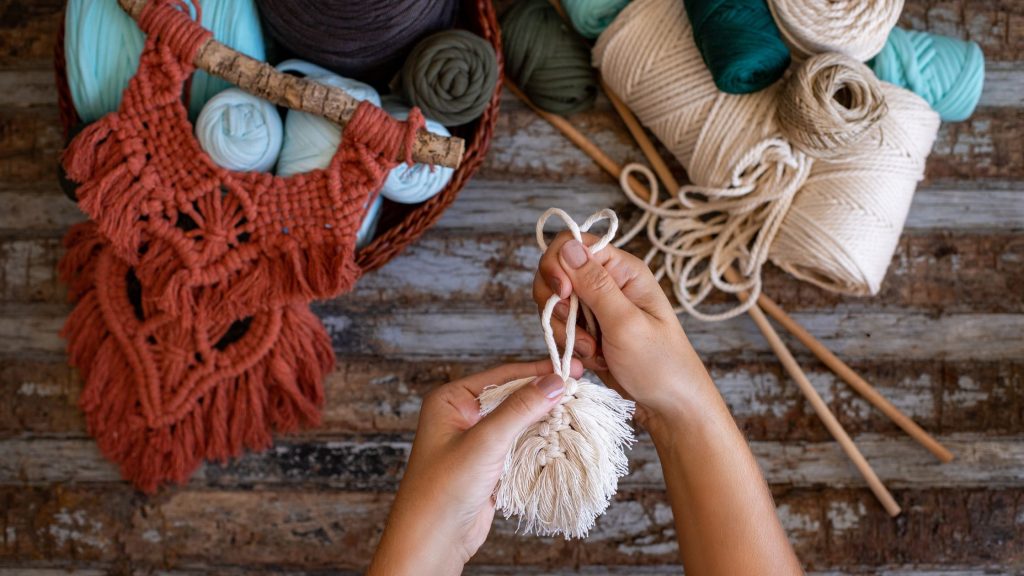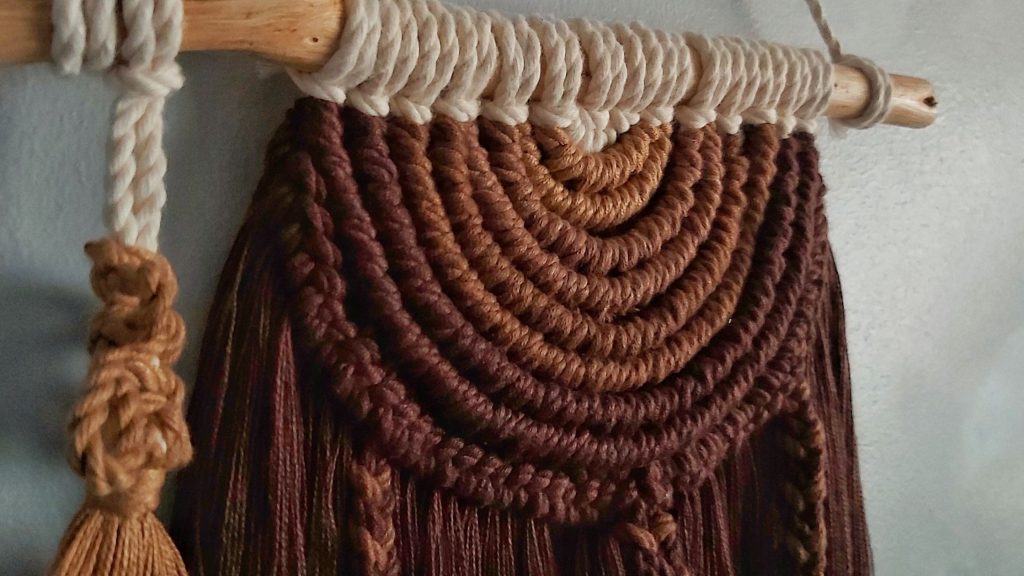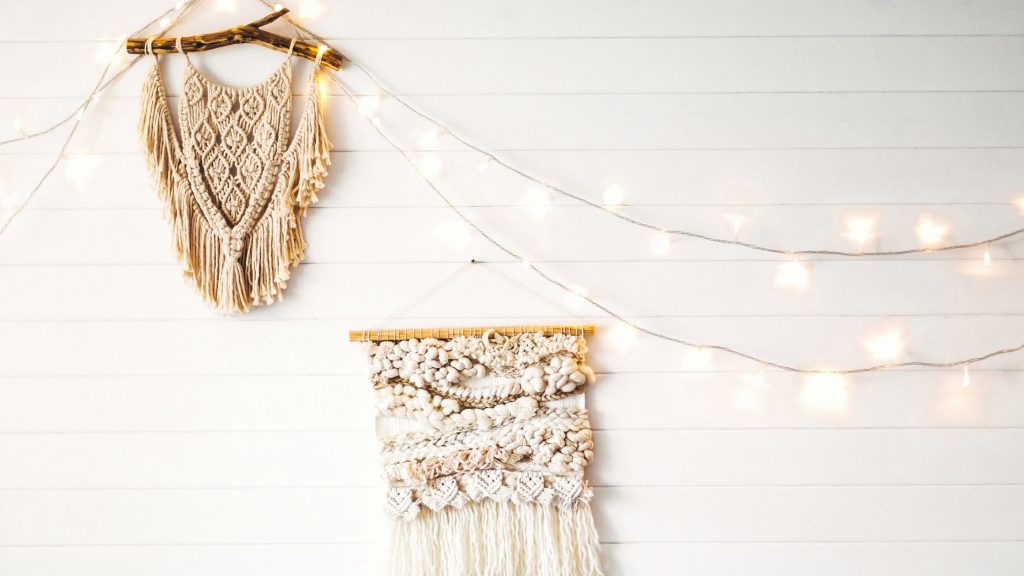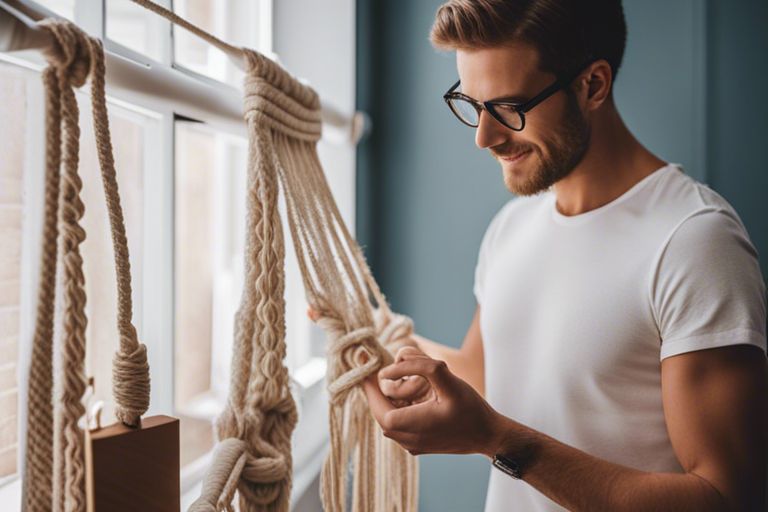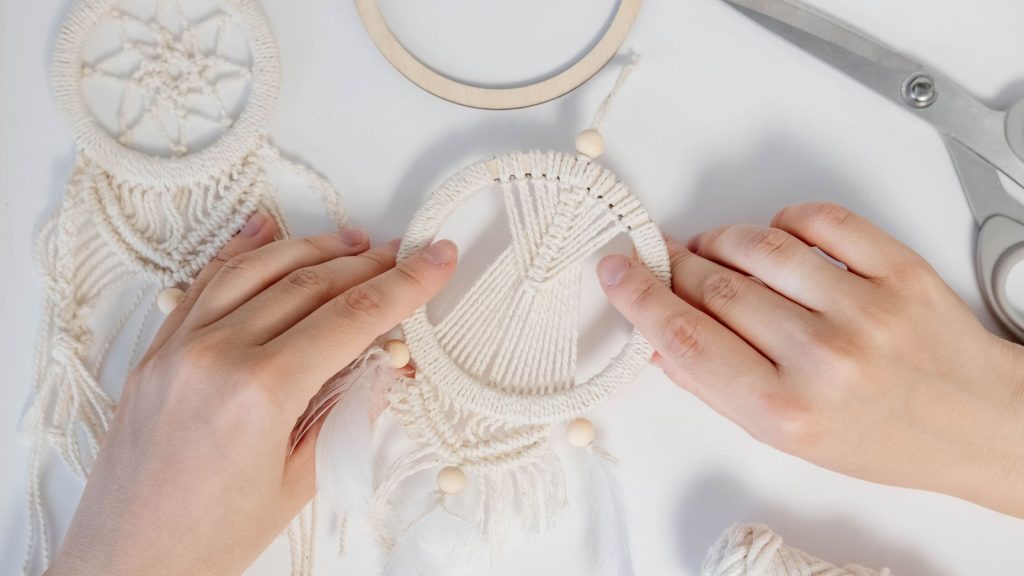Embark on your macramé journey with confidence as we present you with the ultimate beginner’s guide to creating stunning macramé wall hangings. Macramé is an age-old craft that involves tying knots to create intricate and beautiful patterns. It’s a highly rewarding and soothing hobby that allows individuals to create stunning pieces of art for their homes or as gifts for friends and family. However, like any craft, it’s important to learn the basics before diving in, which is where our guide comes in.
In this comprehensive guide, we’ll take you through the essential tools and materials you’ll need, basic knots and techniques to master, and helpful tips and tricks to ensure your macramé wall hangings turn out just the way you envision. Whether you’re a complete novice or have some experience in crafting, this guide will provide you with everything you need to know to get started on your macramé journey.
Key Takeaways:
- Macramé Basics: Understand the fundamental knots and techniques used in macramé wall hangings, such as the lark’s head knot and square knot.
- Materials and Tools: Learn about the types of cords, ropes, and accessories needed for macramé projects, as well as the essential tools for creating intricate designs.
- Design Inspiration: Explore various styles and patterns to kickstart your creativity and personalize your macramé wall hanging to match your home decor.
- Step-by-Step Guidance: Follow detailed instructions and illustrations to create your very own macramé masterpiece, from starting the project to completing the final touches.
- Tips for Success: Discover valuable tips and tricks to troubleshoot common macramé challenges and enhance the overall quality of your wall hanging.
Types of Macramé Wall Hangings
While delving into the world of macramé wall hangings, it’s crucial to understand the various types available. Whether you’re a beginner or an experienced enthusiast, knowing the different options can help you make an informed decision.
| 1. Traditional | 4. Tassel |
| 2. Bohemian | 5. Geometric |
| 3. Modern | 6. Customized |
Basic Patterns for Beginners
Basic patterns for beginners in macramé wall hangings include the classic square knot, double half-hitch knot, and alternating square knot pattern. These simple yet elegant patterns serve as an ideal starting point for those new to the art of macramé.
Variations in Knotting Techniques
Basic variations in knotting techniques involve using different combinations of knots to create unique textures and designs. Experimenting with the lark’s head knot, overhand knot, and Josephine knot can add depth and visual interest to your macramé wall hangings. Any beginner can explore these techniques to elevate their creations.
Innovative Designs and Styles
With a plethora of innovative designs and styles available, macramé wall hangings offer versatility to suit any interior aesthetic. From minimalist and monochromatic designs to vibrant and eclectic styles, the options are endless. This diversity allows artists to express their creativity and cater to a wide range of tastes.
Macramé Wall Hanging Sizes and Their Ideal Locations
Macramé wall hangings come in various sizes, from small and intricate pieces to large statement works. Each size complements different spaces, making them ideal for various locations within your home. Ideal for adding a touch of bohemian charm to living rooms, bedrooms, and even outdoor spaces, macramé wall hangings can be the perfect addition to any interior.
Materials and Tools
Not sure where to start with your macramé wall hanging project? Understanding the right materials and tools is essential for creating a beautiful and sturdy piece. Here, we’ll guide you through the key components you’ll need to get started.
Choosing the Right Cord for Your Project
On your journey to creating a macramé wall hanging, the type of cord you choose will greatly impact the overall look and feel of your piece. Factors to consider when selecting a cord include the weight of your project, the intricacy of the knots, and the texture you want to achieve. Be sure to consider the strength and durability of the cord as well, to ensure your finished piece lasts for years to come.
Supporting Materials: Dowels, Rings, and Branches
Your choice of supporting material will also play a crucial role in the final appearance of your macramé wall hanging. Whether you opt for wooden dowels, metal rings, or natural branches, selecting the right supporting material will impact the size and shape of your project. Plus, it can add a unique touch and enhance the overall aesthetic of your piece.
Plus, choosing high-quality materials will ensure your project is stable and able to bear the weight of the knots. It’s important to consider the size and weight of your wall hanging to determine the appropriate supporting material for your project.
Essential Knotting Tools
Cord, scissors, and a tape measure are the fundamental tools necessary for macramé wall hanging. While it may seem simple, having the right tools can make a significant difference in the efficiency and precision of your crafting process. Additionally, a well-made pair of scissors will ensure clean and precise cuts of the cord, enhancing the overall appearance of your project.
It’s important to invest in high-quality tools to make the process of creating your macramé wall hanging more enjoyable and successful. With the right tools, you’ll have the confidence and ease to bring your creative vision to life.
Factors to Consider Before Starting
Your first macramé wall hanging project can be an exciting and fulfilling experience, but there are several factors to consider before you dive in. Proper planning and preparation will set you up for success and ensure that your project turns out the way you envision it. Here are some important things to think about before you begin:
- Space and location: Consider where you will be working on your macramé project and where the finished piece will be displayed.
- Design and pattern complexity: Decide on the level of intricacy you are comfortable with for your first project.
- Time and patience required: Understand that macramé can be time-consuming and requires a good deal of patience.
After considering these factors, you can proceed with starting your macramé wall hanging project with confidence.
Space and Location for Your Macramé Project
To ensure a successful macramé project, it is important to carefully consider the space where you will be working. Choose a location with a comfortable and well-lit work area where you can spread out your materials and work without feeling cramped. Additionally, think about where you intend to display your finished piece to ensure that it will complement the surroundings and be showcased effectively.
Deciding on the Design and Pattern Complexity
Pattern complexity should be determined according to the location where the macramé wall hanging will be displayed and your level of comfort and experience with macramé. A simpler design may be more suitable for a smaller space or for beginners, while a more intricate pattern can make a striking statement in a larger area.
When choosing a design and pattern complexity, consider the visual impact you want your macramé wall hanging to have and how it will enhance the overall décor of the space. Take into account the time and patience required to complete the chosen design.
Time and Patience Required
Any macramé project requires a significant amount of time and patience. Depending on the size and complexity of your design, it can take anywhere from a few hours to several days to complete. The intricate knots and patterns involved in macramé require careful attention to detail and a steady hand to ensure a beautiful finished product.
The key to success with any macramé project is to approach it with a patient and relaxed mindset and to enjoy the process as much as the end result.
Step-by-Step Guide to Your First Macramé Wall Hanging
Keep track of your progress and follow the step-by-step guide for creating your first macramé wall hanging.
| Setting Up Your Workspace | Measuring and Cutting the Cord |
| To set up your workspace, find a sturdy surface to work on with ample lighting. Gather your materials and tools such as scissors, a tape measure, and a wooden dowel. | On a flat surface, lay out the cord and use a tape measure to cut them into equal lengths according to your design plan. |
Setting Up Your Workspace
To set up your workspace, find a sturdy surface to work on with ample lighting. Gather your materials and tools such as scissors, a tape measure, and a wooden dowel.
Measuring and Cutting the Cord
On a flat surface, lay out the cord and use a tape measure to cut them into equal lengths according to your design plan.
First, it is important to ensure that the measurements are accurate to achieve the desired look for your wall hanging. Take your time in this step to avoid mistakes later on.
Starting with Basic Knots: Larks Head and Square Knots
Basic knots are essential in creating a macramé wall hanging. The larks head knot is used to attach the cord to the wooden dowel, while the square knot is used to create intricate patterns and textures.
Plus, mastering these basic knots will set the foundation for more complex designs in the future. Practice these knots until you feel confident in your technique.
Finishing Touches: Trimming and Fringes
Step-by-step, trim any excess cord to achieve a clean and polished look. Add fringes at the bottom of your wall hanging for an added decorative touch.
Touches such as trimming and adding fringes can elevate the overall appearance of your macramé wall hanging. Take your time in this final step to ensure a professional and neat finish.
Advanced Techniques for Experienced Crafters
Unlike the basic knots and patterns covered in the previous chapters, advanced macramé techniques involve more intricate designs and complex combinations. Here are some advanced techniques for experienced crafters:
- Incorporating Beads and Accessories – This involves adding beads, shells, feathers, or other decorative elements to your macramé wall hanging to give it a unique and personalized touch.
- Mixing Fibers and Colors – Experimenting with different types of fibers and colors can create stunning and visually interesting macramé pieces.
- Crafting Large-Scale Macramé Pieces – Creating larger macramé pieces requires a different set of techniques and considerations than smaller wall hangings.
Incorporating Beads and Accessories
On top of using traditional macramé knots, incorporating beads and accessories can take your wall hanging to the next level. You can use beads to add texture, create patterns, or simply add a touch of bohemian flair to your piece. With the right technique, you can easily integrate beads and accessories into your macramé design, enhancing its overall appeal.
Mixing Fibers and Colors
Any experienced crafter knows that the key to creating visually stunning macramé pieces lies in the combination of fibers and colors. By mixing different types of fibers such as cotton, jute, or wool, and experimenting with various color combinations, you can create truly unique and eye-catching wall hangings. For instance, blending natural and dyed fibers can add depth and dimension to your macramé design, making it stand out even more.
Crafting Large-Scale Macramé Pieces
One of the ultimate challenges for an experienced macramé crafter is crafting large-scale pieces. The techniques used for larger macramé pieces are more complex and require a deep understanding of tension, balance, and structure. Advanced crafters can take on the challenge of creating oversized wall hangings, room dividers, or even hanging plant holders, pushing the boundaries of traditional macramé art.
Advanced crafters who are skilled in these techniques can achieve remarkable results, but it’s important to approach large-scale projects with caution and precision. The larger the piece, the greater the risk of mistakes, so attention to detail and careful planning are crucial when crafting large-scale macramé pieces. However, the potential for creating stunning, statement-making installations is well worth the effort for those who are up for the challenge.
Pros and Cons of DIY Macramé Wall Hangings
| Pros | Cons |
| Creative outlet | Time consuming |
| Cost-effective | Requires patience |
| Craftsmanship satisfaction | Can be physically demanding |
| Unique and personalized | Learning curve |
| Customization opportunities | Not suitable for everyone |
| Meditative and relaxing | |
| Eco-friendly and sustainable | |
The Satisfaction of Handcrafting Versus Time Investment
Investment in creating your own macramé wall hanging may require a significant amount of time and effort. However, the satisfaction that comes from seeing a project through from start to finish and knowing that you crafted something beautiful and unique can outweigh the time invested.
Moreover, the process of creating a macramé wall hanging can be meditative and therapeutic, providing a sense of fulfillment and relaxation.
Customization Opportunities and Limitations
Wall hangings crafted by hand offer limitless customization opportunities. You have the freedom to choose the design, size, and color scheme that best suits your personal style and home décor. However, limitations may arise for individuals who are not experienced in macramé or crafting in general, which may result in a challenge when trying to bring a specific vision to life.
Macramé wall hangings can be tailored to fit any space, making them a versatile and customizable option for decorating your home.
Maintenance and Upkeep
Opportunities for maintenance and upkeep for DIY macramé wall hangings are quite minimal. Once the piece is properly hung and displayed, little to no maintenance is required, making them an ideal long-term decorative solution. Additionally, the durable nature of macramé means that your wall hanging will stand the test of time with minimal effort.
Pros of DIY macramé wall hangings also include their eco-friendly and sustainable nature, which can be appealing to individuals who value environmentally responsible choices in their home décor.
Tips to Perfect Your Macramé Skills
Now that you have mastered the basics of macramé, it’s time to take your skills to the next level. Follow these tips to perfect your macramé skills:
- Practice regularly to improve your technique and speed.
- Watch tutorial videos and read books to learn new knots and patterns.
- Experiment with different types of cords and materials to expand your creativity.
- Seek inspiration from other macramé artists and their work.
- Continue learning and growing by attending workshops or joining a MACRAME FOR BEGINNERS: Ultimate Pictorial DIY community.
Any aspiring macramé artist can benefit from following these tips and continuously refining their craft.
How to Avoid Common Mistakes
Any beginner might encounter common mistakes such as uneven tension or forgetting a step in a pattern. To avoid these, be sure to follow instructions carefully and take your time to ensure precision. It’s also helpful to double-check your work as you go to catch any errors early on.
Furthermore, keep a record of your mistakes and how you corrected them. This will help you learn from your experiences and improve your skills in the long run.
Refining Your Technique with Practice
Macramé is an art form that requires patience and dedication. The more you practice, the more your skills will improve. By refining your technique through consistent practice, you will gain confidence and proficiency in creating intricate macramé wall hangings.
Skills such as knot tying, tension control, and pattern interpretation will become second nature as you continue to hone your craft.
Seeking Inspiration and Continuing Education
Tips for seeking inspiration and continuing education include attending macramé workshops, connecting with other artisans through social media, and staying up to date with the latest trends and techniques in the macramé community.
The more you immerse yourself in the world of macramé, the more you will learn and grow as an artist. Don’t be afraid to explore new ideas and techniques to keep your creativity flowing.
Conclusion
Presently, you should have a solid understanding of the basics of macramé wall hangings and be well on your way to creating your own stunning pieces of art. By following the step-by-step instructions in this guide, you have learned about the different types of knots, essential materials and tools, and various design techniques. With practice and patience, you can develop the skills necessary to create intricate and beautiful macramé wall hangings that will make a statement in any room.
Remember to continue experimenting with different patterns, colors, and textures to create unique pieces that showcase your individual style. As you continue to hone your macramé skills, you will find endless possibilities for creating beautiful and original wall hangings that will add a touch of handmade artistry to your home. Keep exploring and pushing the boundaries of your creativity to truly make your macramé wall hangings your own.
FAQ
Q: What is macramé?
A: Macramé is a form of textile-making that uses knotting techniques rather than weaving or knitting. It is often used to create intricate and decorative wall hangings, plant hangers, and other home décor items.
Q: What materials do I need to get started with macramé wall hangings?
A: To get started with macramé wall hangings, you will need Macramé cord (cotton, jute, or nylon), a wooden dowel or metal ring for hanging, scissors, and a tape measure. Optional materials include beads, feathers, or wooden dowels for embellishments.
Q: How do I begin making a basic macramé wall hanging?
A: To begin making a basic macramé wall hanging, start by cutting several pieces of cord to your desired length. Fold each piece in half and attach them to the wooden dowel or ring using a simple lark’s head knot. Then, begin making square knots or other macramé knots in various patterns to create your design.
Q: What are some tips for creating a visually appealing macramé wall hanging?
A: To create a visually appealing macramé wall hanging, consider using a variety of knotting techniques, incorporating different colors and textures of cord, and adding decorative elements like beads or feathers. It can also be helpful to plan out your design on paper before you start knotting.
Q: How can I hang and display my finished macramé wall hanging?
A: You can hang and display your finished macramé wall hanging by attaching a length of cord to the wooden dowel or ring and hanging it from a hook or nail on the wall. Alternatively, you can display it by attaching it to a decorative wooden rod or a copper pipe for a more modern look.

